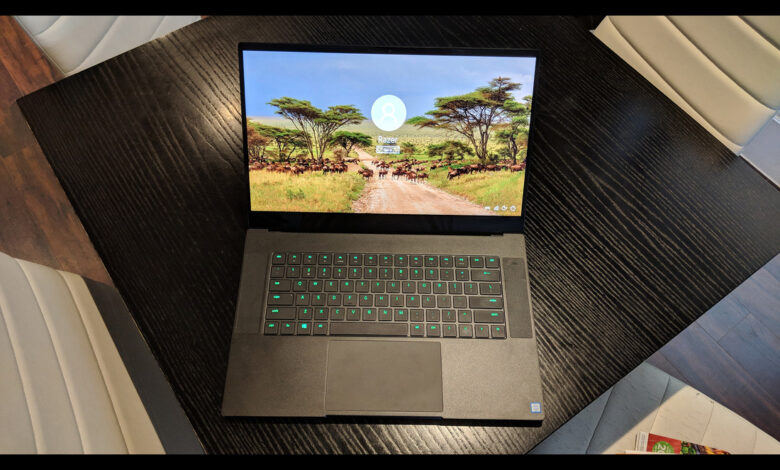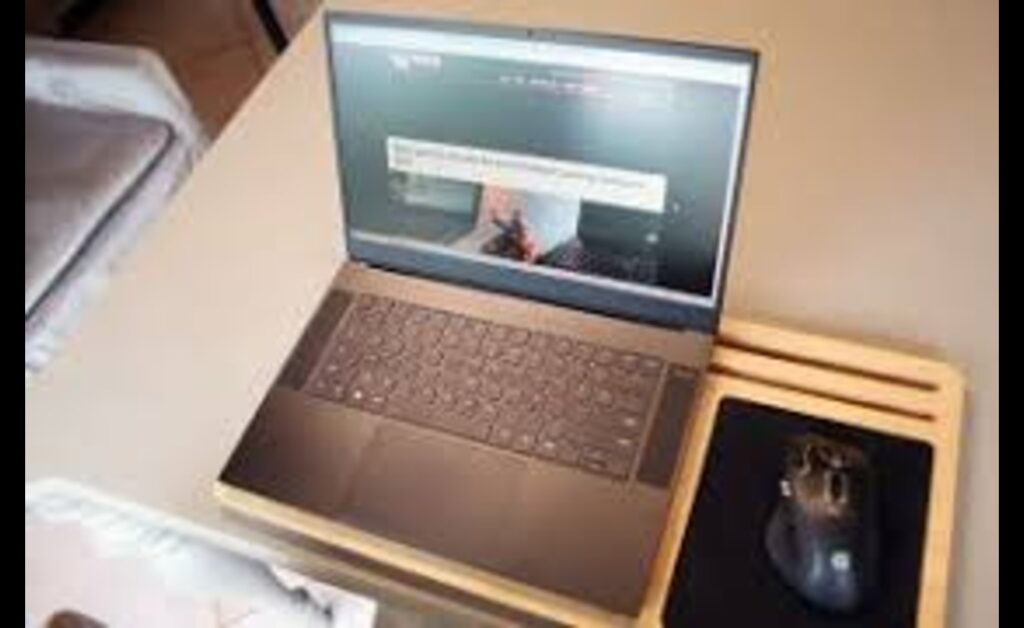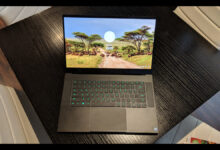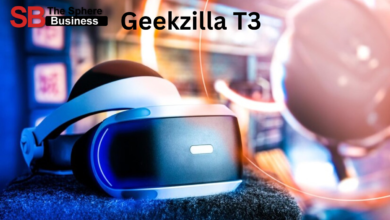Razer Blade 15 2018 H2: A Comprehensive Review of the Gaming Powerhouse

The Razer Blade 15 2018 H2 marked a significant shift in the landscape of gaming laptops when it launched. Combining powerful internals, a sleek and minimalist design, and a strong focus on portability, this model set a new benchmark for other brands. In this article, we will explore the specifications, design, performance, and overall value of the Razer Blade 15 2018 H2, examining why it remains relevant years after its release.
Design and Build Quality of Razer Blade 15 2018 H2
The Razer Blade 15 2018 H2 introduced a refreshed chassis that stood out in the gaming laptop segment. Unlike many bulky, plastic-covered gaming machines, Razer’s approach leaned more toward a MacBook-style aesthetic: minimalist, black, and built from a CNC aluminum unibody.
At just 0.66 inches thick, this was one of the thinnest gaming laptops available at the time. The compact form factor, paired with a 15.6-inch screen and narrow bezels, made the Razer Blade 15 2018 H2 a truly portable gaming laptop. The iconic Razer green logo on the lid and Chroma RGB backlit keyboard added signature flair to the sleek design.
Durability-wise, the metal chassis held up well against flex and pressure, a sign of quality craftsmanship. Whether you’re a student, gamer, or content creator, the device’s premium feel added value to the overall user experience.
Display Specifications of Razer Blade 15 2018 H2
The Razer Blade 15 2018 H2 featured a stunning 15.6-inch Full HD (1920×1080) display with a 144Hz refresh rate in the advanced model. This high refresh rate display was perfect for competitive gaming, offering smooth visuals and a responsive experience.
Color reproduction was above average, with support for nearly 100% sRGB gamut, making the laptop suitable for creative professionals and video editors. The matte finish helped reduce glare, while the thin bezels enhanced immersion.
There was also a base model with a 60Hz screen, which made it more budget-friendly. However, gamers leaned more toward the 144Hz version for a smoother experience in fast-paced titles like CS:GO and Fortnite.
Performance and Hardware of Razer Blade 15 2018 H2
Under the hood, the Razer Blade 15 2018 H2 was equipped with high-end specs for its time:
- Processor: Intel Core i7-8750H (6-core, 12-thread, up to 4.1GHz)
- GPU: NVIDIA GeForce GTX 1060 Max-Q or GTX 1070 Max-Q
- RAM: 16GB DDR4 (expandable)
- Storage: 256GB to 512GB SSD, with options for dual storage in some configurations
The 8th Gen Intel processor delivered excellent multitasking performance, and the GTX 1070 Max-Q allowed users to play AAA titles at high settings with respectable frame rates.
Popular games like The Witcher 3, Overwatch, and PUBG ran smoothly at 1080p. The combination of CPU and GPU made this a capable machine not just for gaming, but also for demanding tasks like video editing and 3D rendering.
Thermal Performance and Cooling System in Razer Blade 15 2018 H2
One of the key challenges in a slim gaming laptop is maintaining proper thermals. The Razer Blade 15 2018 H2 utilized a custom vapor chamber cooling system designed to distribute heat more efficiently than traditional heat pipe systems.
While the cooling solution was innovative, it wasn’t without its limitations. During extended gaming sessions, the laptop could get quite warm, especially on the bottom panel and near the keyboard. The fans also became noticeably loud under load, although they did an effective job of preventing thermal throttling in most situations.
Overall, for a laptop this slim, the thermal performance was commendable, though not perfect.
Keyboard and Trackpad Experience on Razer Blade 15 2018 H2
Razer’s Chroma RGB keyboard was a standout feature of the Razer Blade 15 2018 H2. It supported per-key RGB customization via Razer Synapse software, allowing users to personalize lighting effects or create profiles based on specific games or applications.
Key travel was relatively shallow, which may not appeal to everyone, but it was precise and satisfying for both typing and gaming. The layout was clean, with no cramped keys, even in a compact chassis.
The glass touchpad was another highlight, offering a smooth and responsive experience. It supported Windows Precision drivers and performed exceptionally well in multitouch gestures and daily use.
Battery Life and Portability of Razer Blade 15 2018 H2
The Razer Blade 15 2018 H2 came with an 80Wh battery, which, for a gaming laptop, was quite generous at the time. In real-world usage—such as browsing, streaming, or using productivity apps—it could last around 5–6 hours. However, during gaming or GPU-intensive tasks, the battery drained much faster.
Portability was one of the strengths of this laptop. Weighing around 4.5 pounds (2.1 kg), it was significantly more portable than many of its competitors. This made it ideal for gamers or creators who needed to travel frequently with their devices.
Connectivity and Ports on Razer Blade 15 2018 H2
Despite its slim design, the Razer Blade 15 2018 H2 included a good selection of ports:
- 3 x USB 3.1 Type-A
- 1 x Thunderbolt 3 (USB-C)
- HDMI 2.0
- Mini DisplayPort 1.4
- 3.5mm headphone jack
- Kensington lock slot
- Power connector
The inclusion of Thunderbolt 3 was particularly useful, offering fast data transfer and support for external GPUs, which extended the longevity of the laptop.
Wireless connectivity was handled by Intel Wireless-AC 9260 with Bluetooth 5.0, ensuring fast and stable connections for gaming and streaming.

Software Experience and Razer Synapse
The Razer Blade 15 2018 H2 came pre-installed with Windows 10 and Razer Synapse software. Synapse provided control over the keyboard lighting, fan profiles, performance settings, and macro creation.
The software interface was clean and intuitive, although some users reported occasional bugs or sluggish performance. Still, it added a layer of customization that many power users appreciated.
Razer wisely avoided bloating the machine with excessive pre-installed software, allowing for a cleaner and faster experience out of the box.
Longevity and Upgradability of Razer Blade 15 2018 H2
One of the often-overlooked features in thin laptops is upgradability. Fortunately, the Razer Blade 15 2018 H2 allowed for some future-proofing. Users could upgrade the SSD and RAM (up to 32GB), which extended the machine’s usable lifespan.
Even years after release, the i7-8750H and GTX 1070 Max-Q are capable of handling many modern tasks and games, albeit not at ultra settings. As long as users manage thermals and update software regularly, the laptop remains a viable choice for casual to moderate gaming even in 2025.
Conclusion: Is the Razer Blade 15 2018 H2 Still Worth It?
The Razer Blade 15 2018 H2 was a groundbreaking gaming laptop that redefined what portable gaming could look like. With its powerful specs, sleek design, and premium build quality, it appealed to gamers, creators, and professionals alike.
Even though newer models have since been released, the 2018 H2 variant still holds its own in many areas. If you’re considering a used or refurbished gaming laptop that balances power with portability, the Razer Blade 15 2018 H2 is a compelling option—especially when priced competitively.
In summary, the Razer Blade 15 2018 H2 is more than just a gaming device—it’s a productivity and creativity companion that continues to impress years after its initial debut.



